#MohenjoDaro
Explore tagged Tumblr posts
Text

Sivan, the first to emerge from the indus waters of chaos and the first to bathe in it. The nameless horned god from the indus river valley, Sivan is an enigmatic and mysterious figure. No readable records survive detailing their existence, much less any of the Indus River Valley’s religion. Though the reconstruction efforts have been similarly limited, researchers have been able to provide a possible primitive framework of the mystifying mythology. The basis for the belief system is thought to reside in water, possibly seen as an encompassing life force and/or the primordial waters of chaos. The horned god himself is a ubiquitous feature in art from the Indus River Valley culture, commonly accompanied by animals like the bull, Rhinoceros, elephant, tiger, goats, fish and other animals, sometimes even depicted with plants as well. Sivan was also likely related to the mother goddess, likely a wife or consort of some kind, statuettes of this goddess were plentiful though unlike the horned god her possible appearance in the culture’s seals cannot be determined, possibly being depict as a half tiger god. One seal in particular shows a horned beast emerging from a wavy star-like shape, in my interpretation this could be a record of a cosmogenic myth of the horned god emerging from chaos, however this cannot be proven. Similarly another series of seals seem to tell a story as well, in which two men confront a woman, two tigers then appear and force the men up trees before another man holds back the two beasts. The man could’ve been a representation of Sivan, as other seals depicting these events show the man as having hooves and horns. However any conclusion gathered is entirely conjecture, as these scenes could be totally unrelated events. The horned god himself was likely a god of nature, a pervasive life force that fueled living beings.
The name I gave the Indus River Valley’s horned god, Sivan, is another rendering of the Hindu god Shiva. An older name used by Dravidians, Sivan carries the “An” termination seen in both Dravidian and Tamil languages. This etymology is seen in ancient Tamil literature through the name Āndivanam, an ancient form of Shiva. It has been greatly interpreted over the centuries that the horned god of the Indus River Valley was likely a “prototype shiva” or a predecessor whose worship evolved into the Shiva we have today. Shiva’s equivalent and manifestation in Vedic mythology, Rudra, is believed to have most likely have been derived and fused with the pre-Vedic Shiva and Sivan. Another of the trimutri, Vishnu, may in some form also originate from Sivan. Narayana, the name Vishnu has while resting on the cosmic waters, has the same entomological An as Āndivanam, likely descending from it. This tracks with Sivan’s association with water, as the many public and private baths were found to house many seals and depictions of animals and the horned god, These replaced the typical temples as places of worship, and along with the lingam-esque phalic stones were also a means of worship. This water centric worship could’ve carried over to the Vedic Soma and Varuna as well as the modern Hindu cosmic ocean Karanodaka. The seals detailing the Horned god’s combat against the tigers had been noted by researchers as being heavily reminiscent of the Sumerian Gilgamesh, possibly indicating a possible development or the sharing of an archetype. The Indus Sivan may have shared a similar role to modern Hindu Brahman, an ultimate universal force, a concept that is directly shared by the Dravidians. The Dravidian’s found in southern India are known to descend from the Indus River Valley civilization, with many researchers believing that their mythology is closer to what the Indus River Valley may have believed. The Indus River Valley factually predates the oncoming of Vedic Mythology and the likely arrival of the Proto-indo-Europeans. In all likelihood the Vedic mythos likely formed out of a cultural fusion between Proto-indo-European elements and the Indus River Valley mythos, gathering and absorbing the other splintered tribal traditions of India.
#art#character design#mythology#deity#creature design#sivan#siva#shiva#prajapati#indus river valley mythology#ivc#indus river valley culture#harappan civilization#mohenjodaro#hinduism#supreme god#chief god#water god#mystery god#horned god#bull god#animal god#wildlife god#plant god#progenitor god
7 notes
·
View notes
Text
Mesopotamia and Indus Valley were girlfriends 💅
I don't make the rules.
#mesopotamia#indus valley#harappan civilization#mohenjodaro#desiblr#desi tumblr#desi tag#desiposting#history#ancient civilizations
14 notes
·
View notes
Text
La misteriosa civiltà della Valle dell’Indo
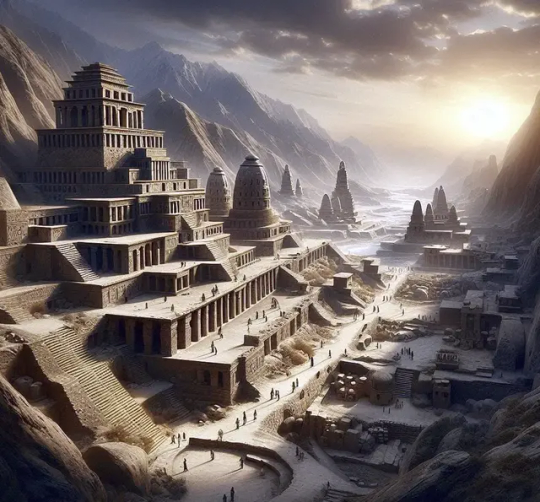
Moltissimi volumi parlano di quella che viene denominata la civiltà della Valle dell’Indo a volte definita cultura di Harappa. Riguardo tale civiltà dobbiamo dire che tombe di una classe dominante non se ne sono mai trovate nella vasta estensione dell’impero della Valle dell’Indo ragion per cui è possibile che quel misterioso popolo non avesse dei nobili nel senso che noi attribuiamo a tale parola. La civiltà della Valle dell’Indo era sotto certo aspetti qualcosa di utilitaristico mentre sotto altri aspetti qualcosa di misterioso. Il primo mistero di tale civiltà era la sua origine. Il grande studioso Wheeler sosteneva che la civilizzazione dell’Indo sembrava essere nata già adulta. A differenza della maggior parte delle città Mohenjo Daro non si era evoluta da un agglomerato di capanne ma era stata costruita in base a una mappa. I bagni pubblici molto spaziosi erano come quelli della Roma imperiale di 2000 anni dopo. Quanto alla rete di canali di tubi di fogna e di tombini era definita dagli esperti la più completa ingegnosa mai concepita nell’antichità. Un altro mistero era il luogo dove sorgeva la civiltà dell’Indo. Tale civiltà è sorta in un luogo apparentemente proibitivo ovvero il bacino dell’Indo. In quel bacino proibitivo arrivarono i fondatori della civilizzazione della Valle dell’Indo avventurandosi giù dai villaggi di montagna dell’Afganistan e dell’Iran. Non sapremo mai chi guidò tali spedizioni verso la torrida pianura e perché altri lo seguirono. Ma doveva trattarsi di gente audace dotata di una mente creativa di pionieri nel senso pieno della parola. Di sicuro non erano esiliati o individui che avevano abbandonato i monti per isolarsi. Alcuni di loro probabilmente condussero una vita di stenti e morirono. Qua e là sulla piana dell’Indo gli archeologi hanno trovato resti di villaggi più antichi di Mohenjo Daro. C’è da dedurne che il tentativo di colonizzare la vallata continuò a intermittenza fallimento dopo fallimento finché un giorno un gruppo riuscì a farcela. Una volta insediati sulle piatte rive dell’Indo certamente la loro vita non doveva essere serena. L’annuale disgelo gonfiando il fiume avrebbe coperto e inondato gran parte del paesaggio. La piena avrebbe rinnovato il terreno e se contenuta alimentato ricchi raccolti. Ma l’imponente fiume poteva essere terribile quando si gonfiava cosicché la lotta tra agricoltori e inondazioni non finiva mai. A volte una piena abnorme aveva la meglio sommergendo fattorie o addirittura interi villaggi: per ben tre volte se non di più la stessa Mohenjo Daro venne quasi spazzata via. La minaccia del fiume aveva dato vita a una storia di intraprendenza e di intelligenza umana quale si è verificata soltanto poche volte nella storia e nella preistoria dell’umanità. Alla fine il gruppo della Valle dell’Indo riuscì ad avere la meglio sul minaccioso fiume. Bonificò sgomberò arginò costruì canali attraverso 375000 chilometri di terra fertile ma minacciata. Il suo territorio diventò più vasto di quello dell’Egitto anzi divenne la civilizzazione più vasta di qualsiasi altra prima dell’Impero Romano. Essa copriva un triangolo i cui lati misuravano circa 1600 chilometri. All’interno di quel triangolo c’erano almeno una settantina di piccoli centri. Tutti usavano gli stessi tipi di utensili di cucina di arnesi di ornamenti personali e di giocattoli e naturalmente usavano la stessa scrittura. Nel gigantesco triangolo erano incluse due città virtualmente gemelle ovvero Mohenjo Daro e Harappa. Ciascuna città aveva una circonferenza di circa 5 chilometri ed entrambe avevano una popolazione di circa 20000 abitanti. Ma forse Harappa potrebbe essere stata costruita una o due generazioni dopo come una specie di capitale alternativa dopo che Mohenjo Daro aveva subito la sua prima terribile inondazione probabilmente le piene eccezionali si verificavano a intervalli di una o due secoli Harappa era più sicura perché il fiume era più piccolo e più calmo. Con tutta probabilità la neve dell’Himalaya e i monsoni del Punjab potrebbero essere stati fattori non determinanti delle piene che a volte erano così micidiali per Mohenjo Daro. Il fattore principale potrebbe essere stato una inclinazione del terreno tra la città e la costa. Un semplice accumulo di detriti nel corso di decenni poteva sollevare il fondo del fiume di parecchi centimetri con risultati e conseguenze disastrose. Ma a quanto sembra le forze naturali costituivano l’unica minaccia esterna per le due città. Infatti né Mohenjo Daro né Harappa erano fortificate ad eccezione della cittadella centrale. Un altro molto significativo era il fatto che le armi ritrovate durante gli scavi sono poche. Ciò fa pensare che non esisteva la paura di invasioni esterne. Inoltre le forze di polizia della città si sentivano al sicuro nella loro roccaforte confidando nella loro capacità di tenere a bada il popolino senza ricorrere all’uso delle armi. Probabilmente tali forze di polizia dovevano controllare solamente il rifornimento di cibo. A differenza delle popolazioni cittadine del Sumer o dell’Egitto gli abitanti di Harappa e Mohenjo Daro non lasciano le loro città per andare a lavorare nei campi. Entrambe le metropoli erano circondate da agglomerati centri urbani che a quanto pare le nutrivano. Quantità enormi di grano dovevano probabilmente affluire nelle città. La pianta di entrambe indicava l’immenso granaio come fulcro economico di quella civiltà. La cittadella di Mohenjo Daro fa pensare che coloro che la costruivano avevano già una certa familiarità con il comando e il prestigio. L’immagine che abbiamo del popolo di Mohenjo Daro è quello di un popolo guidato da reggitori che potrebbero avere avuto attributi sacerdotali ma che seguivano una concezione essenzialmente secolare sufficientemente benevola in ogni caso da incoraggiare un tenore generale di vita insolitamente alto. Dobbiamo mettere in evidenza che a differenza delle civilizzazioni della Mesopotamia e dell’Egitto quella della Valle dell’Indo nacque pienamente organizzata guidata da una volontà che sapeva perfettamente quello che voleva. Ma che cosa mantenne in vita la civiltà della Valle dell’Indo per molti secoli? La risposta a tale domanda si trova le rovine dal momento che nessuna civiltà potrebbe vivere molto a lungo sullo stesso territorio senza lasciare uno strato di oggetti tipici del loro particolare periodo. Le rovine delle due città suggerivano che la civiltà della Valle dell’Indo avesse avuto il suo inizio prima dell’inizio della storia scritta che era cominciata con gli Indoariani. Fino a quando non vennero scoperte Mohenjo Daro e Harappa gli storici pensavano che l’India fosse stata un insieme di tribù primitive prima che la popolazione indoariana introducesse le arti e le scienze. La cosa più strana era che gli strati più profondi delle rovine delle due città mostrava un arte più raffinata di quella degli strati superiori come se i resti più antichi provenissero da una società più progredita. Ma esiste un mistero ancora più grande ovvero che cosa determinò la sparizione della civiltà della valle dell’Indo. Per quanto riguarda Mohenjo daro lo studio delle rovine fa pensare che la città sia andata incontro ad un lento declino. Infatti lo studio delle rovine dimostra che le nuove generazioni costruirono sulle fondamenta in dissesto dei loro antenati trasformando quartieri una volta dignitosi in bassifondi. Possiamo dire che gli edifici dello strato superiore davano questa idea. Tale lento declino non era avvenuto ad Harappa che non dava alcun senso di lento declino. A quanto sembra la vita di quella seconda città si fermò quando essa era all’apice della sua grandezza. La maggior parte degli studiosi pensa che Harappa sia stata abbandonata dai suoi abitanti non appena si erano accorti che Mohenjo Daro era già morta. Con tutta probabilità alcuni di tali abitanti avranno cercato scampo sui monti dal momento che per gli abitanti di Harappa fuggire sarebbe stato più facile e meno drammatico che affrontare la triste fine di Mohenjo Daro. Ma che cosa poteva aver provocato il lento declino della città? Nessuno è in grado di dare una risposta chiara e semplice. Molti fattori potevano essersi accumulati a danno della città come raccolti più scarsi impoverimento etnico mancanza di una guida squilibrio ecologico. Concludiamo il nostro discorso ribadendo che i primi capitoli della storia della civiltà dell’Indo probabilmente non si conosceranno mai. Tutto quello che sappiamo non è in grado di risolvere né il mistero dell’origine di tale civiltà né tanto meno quello della sua fine. Prof. Giovanni Pellegrino Read the full article
1 note
·
View note
Text
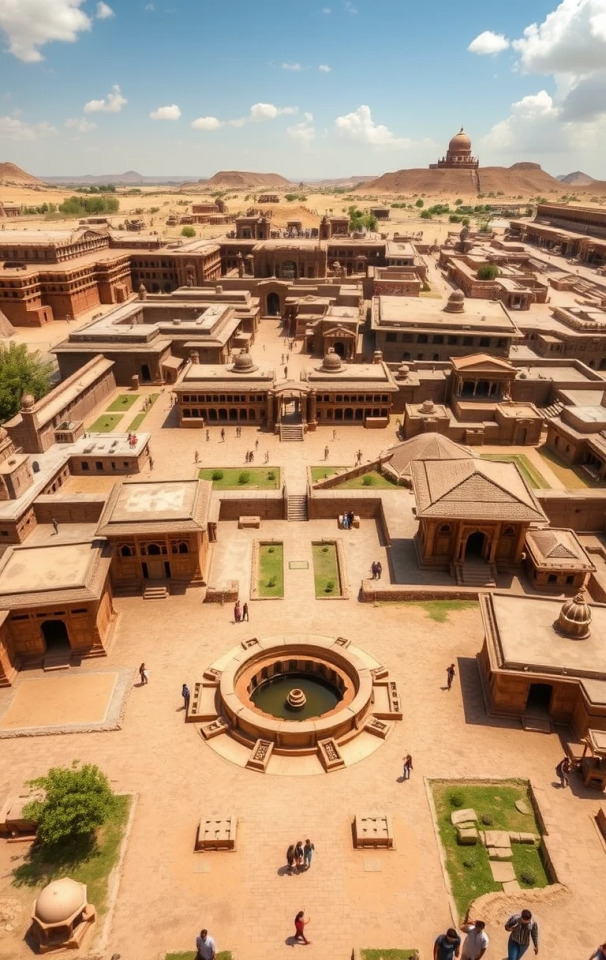
Long before Rome or Greece, the Indus Valley Civilization thrived with advanced urban planning, drainage systems, and trade networks. Mohenjo-Daro and Harappa remain symbols of an advanced yet mysterious past. 🏺✨
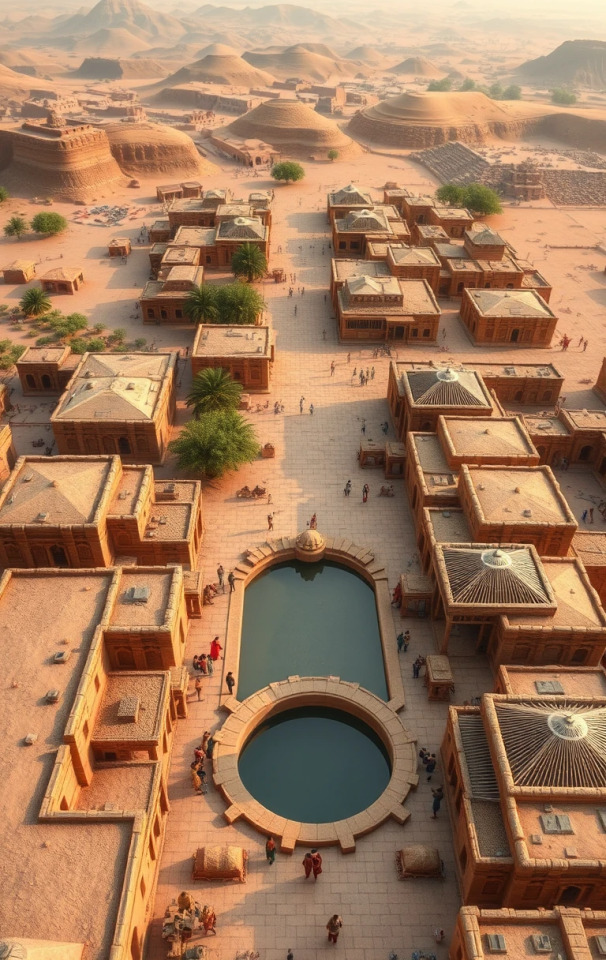
#AncientIndia#IndusValley#HistoryLovers#LostCivilizations#Archaeology#MohenjoDaro#Harappa#IndianHistory#AncientMysteries#WorldHistory
0 notes
Text
Exploring the Rich History of UNESCO World Heritage Sites in Pakistan
Pakistan, a country known for its diverse landscapes, rich cultural heritage, and ancient history, is home to several UNESCO World Heritage Sites that have been recognized for their outstanding universal value. These sites showcase the rich cultural, historical, and natural beauty that makes Pakistan a unique destination for history buffs, cultural enthusiasts, and travelers alike. From the stunning ruins of ancient civilizations to the grandeur of Mughal architecture, Pakistan’s UNESCO World Heritage Sites offer a glimpse into the nation’s rich past and its contributions to global culture.

1. The Ancient City of Mohenjo-Daro
One of Pakistan's most significant UNESCO World Heritage Sites is Mohenjo-Daro, an ancient city that dates back to around 2500 BCE. Located in the province of Sindh, Mohenjo-Daro was once a flourishing city of the Indus Valley Civilization, one of the world's oldest urban cultures. The archaeological site is renowned for its advanced urban planning, including grid-like streets, sophisticated drainage systems, and well-built homes. The discovery of Mohenjo-Daro has provided valuable insights into the lifestyle, art, and technology of the ancient Indus Valley people. Today, it stands as a testament to the ingenuity of early civilizations and continues to be a must-visit destination for those interested in ancient history.
2. The Historic Forts of Lahore
The Lahore Fort, also known as the Shahi Qila, is another UNESCO World Heritage Site in Pakistan that holds significant cultural importance. The fort, located in the heart of Lahore, dates back to the 16th century and is a prime example of Mughal architecture. The fort’s walls are adorned with intricate decorations, including frescoes, carvings, and tile work, showcasing the grandeur of the Mughal Empire. Inside the fort, you can explore the Sheesh Mahal, Diwan-i-Aam, and Badshahi Mosque, all of which are renowned for their architectural beauty and historical significance.
The Shalimar Gardens, located nearby, are another example of Mughal-era garden design and were constructed under the rule of Emperor Shah Jahan. These gardens are a fine example of the Mughal Empire's love for beauty, nature, and symmetry.
3. The Buddhist Ruins of Takht-i-Bahi and the Monastic Complex of Sahr-i-Bahlol
In the province of Khyber Pakhtunkhwa, the UNESCO World Heritage Site of Takht-i-Bahi is an ancient Buddhist monastic complex that dates back to the 1st century BCE. This well-preserved archaeological site offers a glimpse into the life of Buddhist monks during ancient times. Located on a hilltop, Takht-i-Bahi served as an important center for Buddhist learning and is one of the most impressive Buddhist archaeological sites in Pakistan. Visitors can explore the ruins of temples, monastic cells, and courtyards that have stood the test of time.
Nearby, the Sahr-i-Bahlol site is another significant Buddhist complex that has been recognized for its archaeological value. It provides additional evidence of Pakistan’s rich Buddhist heritage, which once flourished in the region before the advent of Islam.
4. The Ruins of the Gandhara Civilization
The Gandhara Civilization flourished in the northwestern regions of Pakistan, particularly in areas like Taxila, which is home to another UNESCO World Heritage Site. Taxila, located near Islamabad, was an ancient center for learning, trade, and cultural exchange. This site is famous for its Buddhist stupas, monasteries, and ruins that date back to as early as the 6th century BCE. Taxila is an important symbol of Pakistan's Buddhist history and an outstanding example of ancient urban planning.
The Gandhara civilization played a crucial role in the spread of Buddhism across Central Asia, and many of its cultural influences can still be seen in the region today. The ruins of Taxila include important structures like the Dharmarajika Stupa, Jaulian Monastery, and Sirkap, all of which highlight the importance of Gandhara in the history of South Asia.
5. The Cultural Landscape of the Kalash Valley
The Kalash Valley in Chitral, located in the northwestern region of Pakistan, is a unique cultural landscape that is home to the Kalash people, one of the last remaining pagan communities in Pakistan. Their distinct traditions, language, and festivals have earned the Kalash Valley recognition as a UNESCO tentative cultural heritage site. The Kalash people are known for their colorful festivals, traditional attire, and religious practices, which center around the worship of nature.
The Kalash Valley offers visitors the chance to experience a culture that has remained largely untouched by modern influences. The valley's picturesque landscapes, complete with snow-capped mountains, terraced fields, and traditional wooden houses, make it a fascinating destination for cultural tourism.
6. The Makli Necropolis
Located in Sindh, the Makli Necropolis is one of the largest and most impressive funerary sites in the world. This UNESCO World Heritage Site is a vast cemetery that spans over 10 square kilometers and contains the tombs of many important rulers, scholars, and saints from the Sultanate of Sindh. The site is known for its intricate carved stone tombs and mosques, which represent a fusion of Islamic and local architectural styles.
The Makli Necropolis is an architectural marvel that provides a glimpse into the artistic and religious traditions of the region during the medieval period. Visitors to Makli can explore the well-preserved tombs and marvel at the craftsmanship of the stone carvings and architectural elements.
Conclusion: Preserving Pakistan’s Heritage for Future Generations
Pakistan’s UNESCO World Heritage Sites are not only important for their cultural, historical, and natural significance, but they also play a key role in promoting tourism and international awareness of Pakistan's rich heritage. These sites offer a unique opportunity to explore the country's diverse history, from the ancient ruins of Mohenjo-Daro to the grandeur of Mughal forts and the Buddhist monastic complexes of Takht-i-Bahi.

For those interested in history, culture, and architecture, Pakistan’s UNESCO sites provide an unmatched experience that will leave you in awe of the country’s historical importance and natural beauty. As these sites are preserved and protected, they will continue to attract visitors from around the world and ensure that Pakistan's cultural heritage is celebrated for generations to come.
For more information about UNESCO World Heritage Sites in Pakistan, visit this link.
#UNESCOWorldHeritage#PakistanHeritage#MohenjoDaro#LahoreFort#TakhtiBahi#GandharaCivilization#Taxila#KalashValley#MakliNecropolis#HistoricalSitesPakistan#BuddhistHeritage#PakistaniCulture#MughalArchitecture#CulturalHeritage#PakistanTourism#AncientHistoryPakistan#TravelPakistan#UNESCOHeritageSites
0 notes
Text
Capítulo 8: El Gran Despertar

¿Qué pasaría si te dijera que la historia que te enseñaron está incompleta, que civilizaciones avanzadas como la nuestra existieron, colapsaron y fueron borradas de los registros… una y otra vez? Este no es un cuento de ficción. Es la hipótesis del Eterno Retorno, un patrón que conecta desde las pirámides de Egipto hasta los experimentos nazis en la Antártida. En este último capítulo de la temporada, desentrañaremos cómo ocultismo, portales dimensionales y señales extraterrestres son piezas de un rompecabezas diseñado para mantenernos dormidos. Si te quedas hasta el final, descubrirás qué fuerza oscura controla estos ciclos y cómo podríamos escapar. ¿Listo para el desafío?
La idea del Eterno Retorno
Friedrich Nietzsche no fue el primero en hablar de ciclos infinitos. Los estoicos griegos, los hindúes con sus "Yugas" y los aztecas con sus "Soles" ya teorizaban sobre el tiempo circular. Pero en 1882, Nietzsche lo elevó a concepto filosófico: "¿Qué pasaría si un demonio te susurrara que esta vida ya la has vivido infinitas veces?".
Pero aquí está lo que Nietzsche no sabía: en 2021, un equipo de la Universidad de Cambridge analizó 4,500 años de registros arqueológicos y concluyó que el 92% de las civilizaciones colapsaron siguiendo el mismo patrón: auge tecnológico → desigualdad → colapso ecológico. El estudio, publicado en Science Advances, usó modelos matemáticos para demostrar que nuestra civilización sigue la misma curva.
¿Coincidencia? Imposible. Porque, como veremos, las pirámides de Bosnia (descubiertas en 2005) y los mapas de Piri Reis (1513), que muestran la Antártida sin hielo, sugieren que alguien antes que nosotros ya vivió este ciclo. Y lo que es peor: alguien lo está ocultando.
Civilizaciones perdidas y su legado
En 1994, el geólogo Dr. Robert Schoch sacudió al mundo al demostrar que la Esfinge de Giza fue erosionada por lluvias torrenciales, algo que no ocurre en Egipto desde hace 12,000 años. Es decir: la Esfinge es miles de años más antigua que las pirámides. Pero esto es solo la punta del iceberg.
Gobekli Tepe (Turquía, 9600 a.C.): Descubierto en 1994 por Klaus Schmidt, este complejo de pilares de 20 toneladas tallados con animales extintos demuestra que cazadores-recolectores no podrían haberlo construido. ¿Quién lo hizo? Y ¿por qué fue enterrado deliberadamente en el 8000 a.C.?
Yonaguni (Japón, 1986): Estructuras submarinas con escalinatas y ángulos de 90° que datan de 10,000 a.C., cuando el nivel del mar era 40 metros más bajo. El geólogo Masaaki Kimura afirma que son artificiales; la comunidad científica lo tacha de "formación natural".
El Evento del Younger Dryas (12,800 a.C.): En 2007, el geofísico Allen West publicó evidencia de que un cometa impactó la Tierra, provocando incendios globales y un invierno nuclear. ¿Fue este el fin de una civilización avanzada? Los mitos del diluvio universal en 200 culturas parecen confirmarlo.
Pero aquí está el dato clave: en 2017, el historiador Graham Hancock reveló en "América antes" que la Amazonía alberga ruinas de una civilización desconocida con tecnología de "terra preta", un suelo fértil creado artificialmente hace 4,500 años. ¿Por qué no nos lo enseñan?
El patrón universal: Ascenso y caída
Tomemos Roma. En el año 117 d.C., bajo Trajano, controlaba el 21% de la población mundial. Pero en el 476 d.C., colapsó. ¿La razón? Lead pipes (tuberías de plomo) envenenaron a la élite, la corrupción desangró el erario y las invasiones bárbaras terminaron el trabajo. Ahora, piensa en el plomo en el agua de Flint (2014) o el colapso de Venezuela (2016).
Pero esto no es solo historia. En 2014, la NASA financió un estudio dirigido por el matemático Safa Motesharrei que modeló el colapso civilizatorio. Sus hallazgos: las élites consumen recursos hasta provocar hambrunas masivas, lo que desata revueltas y colapso. El estudio fue silenciado, pero está disponible en Ecological Economics.
Y aquí entra lo cósmico: los mayas calcularon que el 21 de diciembre de 2012 terminaba un ciclo de 5,125 años. ¿Casualidad que desde entonces hayamos tenido COVID-19, guerras híbridas y crisis climática? Los códices Dresde y Madrid mencionan que cada ciclo termina con "limpiezas" por fuego o agua.
Todo está conectado
En el Capítulo 7, hablamos de la Señal WOW! (1977), un pulso de radio de 72 segundos desde la constelación de Sagitario. Pero lo que no dije es que, en 2020, el astrónomo Alberto Caballero identificó una estrella similar al Sol en esa zona: 2MASS 19281982-2640123. ¿Coincidencia? Quizá no.
Ocultismo nazi: En 1938, Heinrich Himmler envió la expedición SS-Ahnenerbe al Tíbet para buscar la ciudad subterránea de Shambhala, creyendo que guardaba tecnología hiperbórea. En 1943, según documentos desclasificados en 2006, los nazis probaron un "campo de torsión" en los Urales para alterar la gravedad. ¿Intentaban romper el ciclo?
Antártida: En 1947, el almirante Richard Byrd lideró la Operación Highjump, una invasión militar a la Antártida con 4,700 soldados. En su diario secreto (publicado póstumamente en 1996), Byrd escribió: "Encontré una tierra más allá de los polos, con mamuts y humanos de 3 metros". ¿Una civilización intraterrena?
Montauk: En 1983, el ingeniero Preston Nichols afirmó haber trabajado en un proyecto secreto en la base aérea de Montauk, donde manipulaban el tiempo usando tecnología Tesla. Testigos como Al Bielek juraron haber viajado a 2137 y visto una Tierra postapocalíptica.
Pero el hilo conductor es claro: todos buscaban escapar del ciclo.
Lecciones del pasado para el futuro
En 1972, el informe "Los límites del crecimiento" predijo que colapsaríamos en 2040 si no cambiábamos. En 2020, un estudio de la Universidad de Melbourne confirmó que vamos en camino. Pero hay esperanza:
Islandia, 1783: Tras la erupción del Laki (que mató al 25% de su población), los islandeses adoptaron un sistema de cooperativas agrícolas que los salvó de la hambruna.
Cultura Clovis (América, 12,800 a.C.): Tras el Evento Younger Dryas, desarrollaron herramientas de caza avanzadas para sobrevivir.
Pero la clave está en Turquía, 2015: En la antigua ciudad hitita de Hattusa, se hallaron tablillas que describen cómo evitaron el colapso con leyes de conservación de bosques y redistribución de alimentos. ¿Aprenderemos?
El rompecabezas completo
El físico Roger Penrose ganó el Nobel en 2020 por demostrar que los agujeros negros emiten radiación. Pero en su libro "Ciclos del tiempo" (2010), va más allá: propone que el universo pasa por "eones" infinitos, donde cada Big Bang es el renacimiento de un ciclo anterior.
¿Y si nuestra historia es un reflejo de esto? Las pirámides alineadas con Orión, los nazis obsesionados con el hiperbóreo, las señales extraterrestres... Todo apunta a una verdad: el tiempo es un bucle, y solo el conocimiento oculto (guardado por sociedades como los Rosacruces o los Illuminati) podría romperlo.
El Gran Despertar
¿Sabías que en 1994, cuando el arqueólogo Klaus Schmidt descubrió Gobekli Tepe, la academia le advirtió que "no podía existir"? Una estructura de 12,000 años, con pilares de 20 toneladas tallados con animales extintos, en una época en la que, según los libros, éramos cazadores-recolecturos analfabetos. ¿La respuesta oficial? "Es un templo ritual, no una ciudad". ¿Y las máquinas de corte de precisión necesarias para esculpir la andesita, una roca más dura que el granito? Silencio. Esto no es arqueología. Es censura.
Y no es el único caso. En 1936, en Bagdad, se hallaron las baterías de Mesopotamia (250 a.C.), capaces de generar electricidad. En 1900, el mecanismo de Anticitera (100 a.C.) demostró que los griegos conocían la astronomía avanzada. Pero aquí está el truco: estos ooparts (artefactos fuera de lugar) son guardados en sótanos de museos o etiquetados como "objetos ceremoniales". ¿Por qué? Porque si aceptamos que hubo civilizaciones con tecnología superior, toda la historia se derrumba.
La gran mentira es que la evolución es lineal. Nos venden que pasamos de las cavernas a los iPhone en 10,000 años. Pero ¿cómo explicamos las pirámides de Bosnia, datadas en 30,000 años, con bloques de 40 toneladas? ¿O las esferas de piedra de Costa Rica, perfectamente redondas, que solo pueden fabricarse con tecnología láser? La respuesta es incómoda: no somos los primeros.
Y si no encontramos sus ciudades, no es porque no existieran. Es porque alguien las borró. En 1947, el físico Robert Oppenheimer, padre de la bomba nuclear, citó el Bhagavad Gita durante la prueba Trinity: "Me he convertido en la muerte, destructor de mundos". ¿Sabía él algo que nosotros ignoramos? En Mohenjo-Daro (Pakistán), se hallaron esqueletos con niveles de radiación 50 veces superiores a lo normal y piedras vitrificadas, algo que solo ocurre a 4,000°C... como en Hiroshima. Los textos védicos hablan de "Vimanas" (naves) y "Astras" (armas divinas). ¿Fue Mohenjo-Daro destruida por una guerra nuclear hace 8,000 años? La academia dice "no hay evidencia". Claro, porque la evidencia está pulverizada.
La historia que te enseñan es una Matrix de mentiras. Gobekli Tepe, las baterías de Bagdad, Mohenjo-Daro... son grietas en el sistema. Y si no las ves en los libros, es porque hay una agenda. En 1966, el biólogo Ivan Sanderson fundó la Sociedad para la Investigación de lo Inexplicable, pero sus hallazgos fueron ridiculizados. En 1984, el gobierno de India bloqueó las excavaciones en Ram Setu, un puente de 1.7 millones de años que coincide con el Ramayana. ¿Qué ocultan?
El Gran Despertar no es una metáfora. Es entender que la historia es cíclica, no lineal. Que hubo Atlántidas y Lemurias, y que seremos nosotros los próximos en caer si seguimos creyendo en cuentos. Como dijo el filósofo George Santayana: "Aquellos que no recuerdan el pasado están condenados a repetirlo". Pero ¿y si el pasado fue borrado a propósito?
Este es tu momento. Sal de la Matrix. Cuestiona los libros. Investiga los ooparts. Y recuerda: la verdad no está en lo que te muestran, sino en lo que ocultan. El ciclo se rompe cuando despiertas.
¿Estás listo?
Bibliografía
"Fingerprints of the Gods" - Graham Hancock (1995).
"The Cycle of Cosmic Catastrophes" - Richard Firestone (2007).
"The Secret Doctrine" - Helena Blavatsky (1888).
"NASA Study on Civilizational Collapse" - Safa Motesharrei (2014).
"Decoding the Antarctic Anomaly" - Joseph P. Skipper (2001).
"The Montauk Chronicles" - Peter Moon (1992).
"Cycles of Time" - Roger Penrose (2010).
#EternoRetorno#CivilizacionesPerdidas#HistoriaOculta#ConspiraciónReal#GobekliTepe#ArqueologíaProhibida#MisteriosAntártida#Ooparts#CiclosHistóricos#DespertarColectivo#Matrix#TeoríasConspiración#NazisOcultos#PortalesDimensionales#ProyectoMontauk#SeñalesExtraterrestres#MohenjoDaro#TecnologíaAntigua#HistoriaCíclica#DespertarEspiritual#MentirasHistoria#ArqueologíaMaldita#EvidenciaPerdida#CataclismosAntiguos#SociedadesSecretas#NASA#UniversidadCambridge#CienciaAlternativa#DocumentalConspiración#MisteriosSinResolver
0 notes
Text
SIR SYED MUSEUM Islamabad


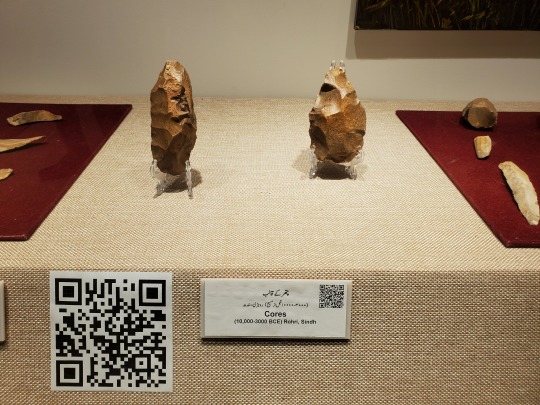
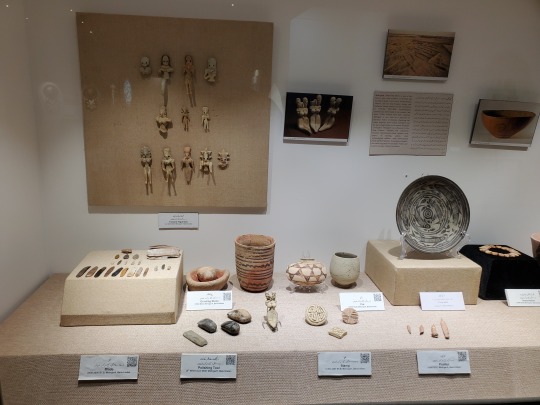

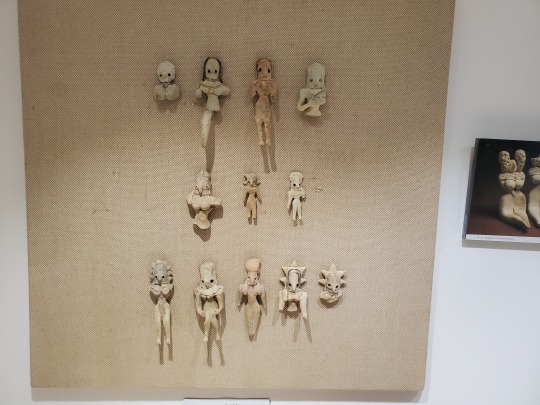
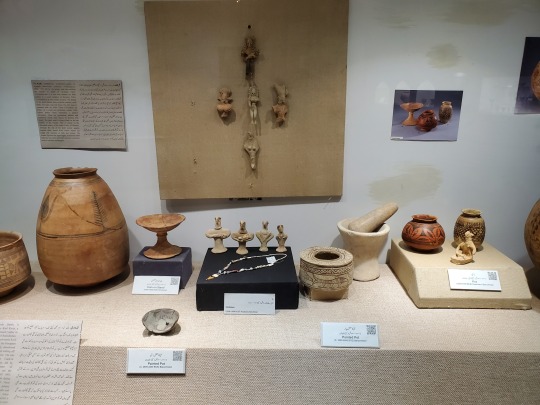

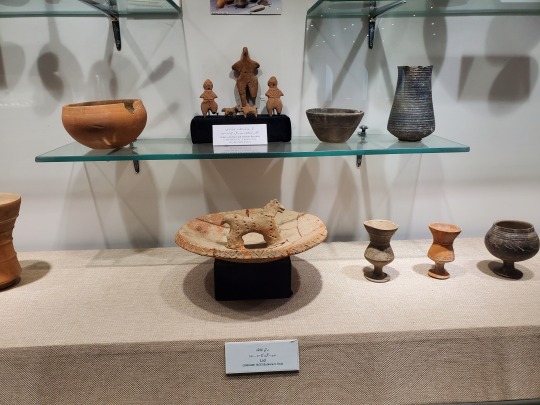

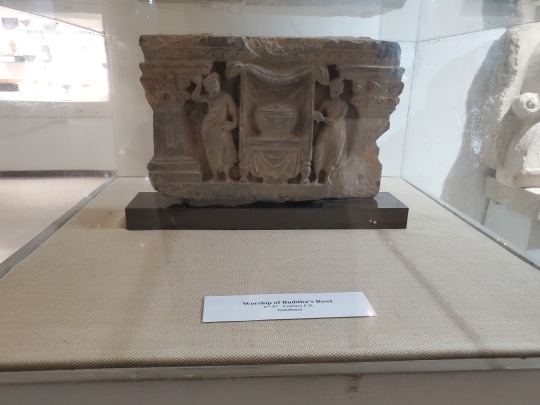
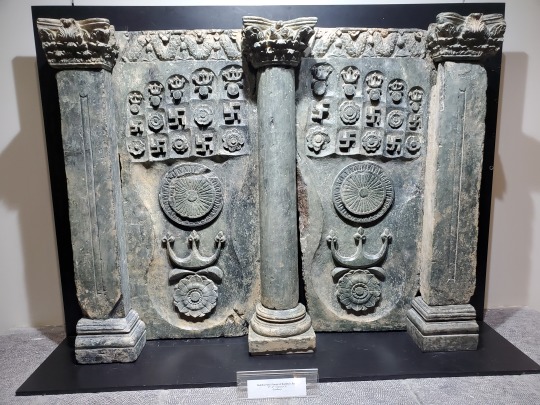


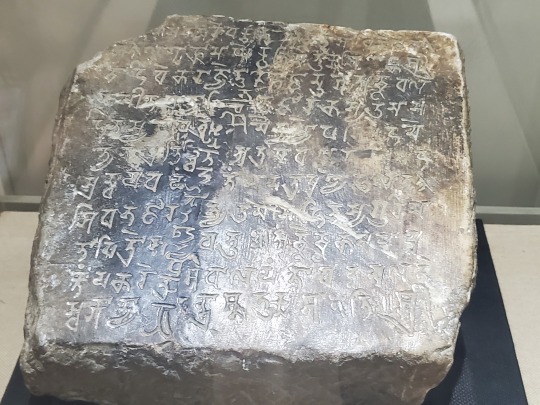
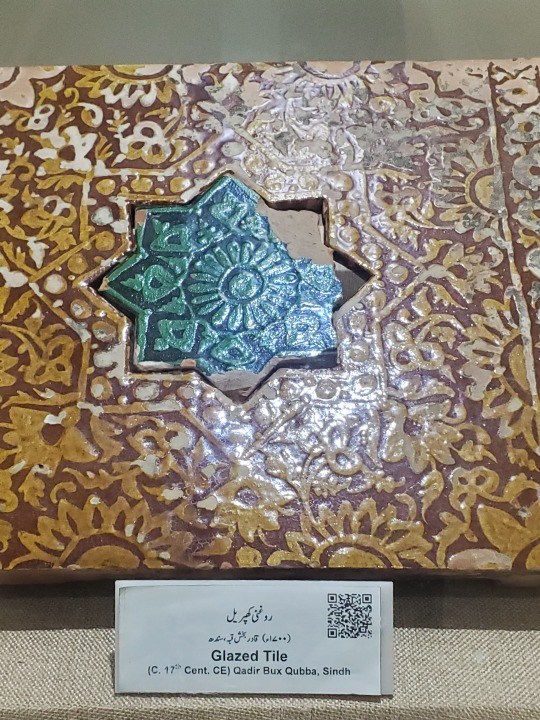
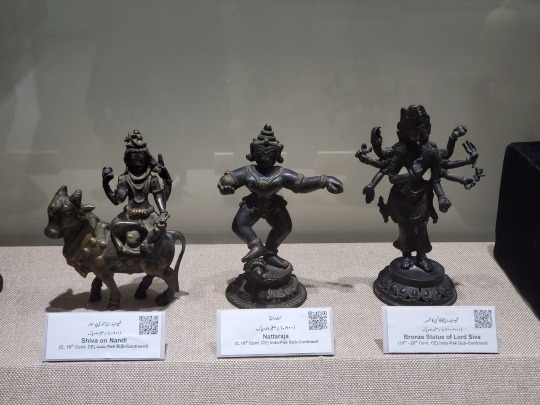


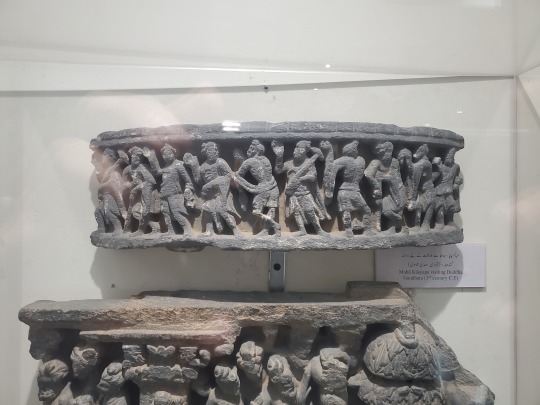

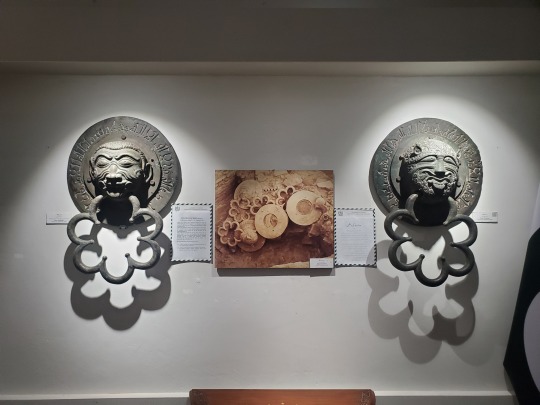



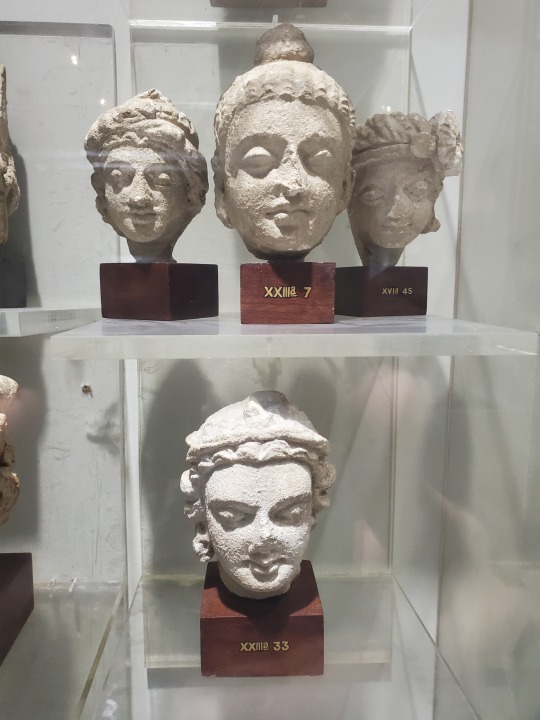


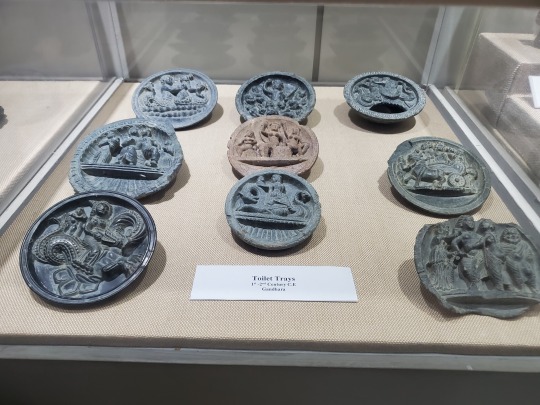

Few people in Islamabad even know this exists. One of the best kept, stocked and informative museums in the country - and it's free
The votive stupa is a replica of the original found at Mohra Muradu in Taxila
#SirSyedMemorial#SirSyedMuseum#IndusValleyCivilization#GandharaArt#India#IndianSubcontinent#IslamabadMuseum#Pakistan#HinduAntiquities#SikhHistory#SouthAsianArchaeology#MohenjoDaro#Harappa#BritishIndia
1 note
·
View note
Text

0 notes
Video
youtube
Conocimientos Secretos sobre la verdadera historia de la Humanidad #civilizacionesavanzadasprehistóricas
Como veremos en diversos vídeos que están insertados en esta Publicación la verdadera historia de la humanidad, está comenzando a ser sacada a la luz, aunque aún los obstáculos y la desinformación es muy sutil pero fuertemente utilizada para confundir la lógica y la razón de aquellos que no somos especialistas en estas Difíciles y muy diversas disciplinas de las Ciencias, tanto arqueológicas, como de ingeniería a las que se están sumando toda la tecnología desarrollada mediante la computación, radar, y el uso de satélites, junto a la cosmología, astronomía y astrología. Todo esto pueden verlo en la Publicación del Blog LOGOS https://logosconocimientos.blogspot.com/2023/12/como-veremos-en-diversos-videos-que.html
La historia oficial muchas veces nos oculta la verdad que las evidencias encontradas en los yacimientos arqueológicos, cuando son analizadas utilizando métodos científicos, y aplicándole la lógica con un filtro de ingeniería práctica, de las técnicas que actualmente están a nuestro alcance, se nos muestra de forma clara y aunque parezcan increíbles, son la verdadera explicación de lo que en estos maravillosos yacimientos es sacado a la luz, mostrándonos un pasado remoto, del cual nada o a penas nada sabemos, pero que las últimas técnicas de análisis del terreno, el relieve y la densidad de lo que existe bajo tierra, en estos lugares salen a la luz Muchas veces hemos oído hablar de ciudades míticas que existieron en el pasado y que albergaban tesoros, sabiduría y poder.
Pero, ¿Qué hay de cierto en estas leyendas? ¿Se trata de simples fantasías o de realidades ocultas ver en el siguiente vídeo https://youtu.be/bdZHBP3658s?si=5RxMCt2coSLaEcA9 Un ejemplo claro es uno de los últimos vídeos subidos al Canal: "Mohenjo Daro y Harappa: El Misterio de una Civilización Aniquilada por Ataque Nuclear" Adéntrate en los misterios de Mohenjo Daro y Harappa, Lee y seguro que verás el vídeo completo, ya que lo que crees hasta ahora cambiará mediante pruebas científicas, las cuales no salieron a la luz hasta ahora, debido en primer lugar, porque cuando se descubrieron muchas de estas evidencias, aún se desconocía la energía Atómica, algo que hace tan solo Décadas conocemos, además de que hay algún tipo de interés, o mano negra que desea mantenernos en la ignorancia de la verdad sobre nuestra verdadera Historia. La antigua ciudad que yace bajo las arenas de Pakistán, ocultando secretos enterrados durante 4600 años (Seguramente muchísimo más). Descubre las evidencias sorprendentes de un "ATAQUE NUCLEAR" en el pasado remoto: miles de cadáveres, radiación mortal, piedras fundidas. ¿Fue Mohenjo Daro y Harappa víctimas de una guerra atómica librada por seres de otro mundo? Testimonios escalofriantes revelan cadáveres abrazados, sintiendo la muerte repentina causada por algo que descendió del cielo. Analizamos pruebas de radiación que desafían los límites mortales y materiales fundidos a temperaturas astronómicas. ¿Cómo explicar estos fenómenos en una civilización de hace más de 4600 años? Exploramos la conexión entre Mohenjo Daro, Harappa y los Vimanas, artefactos mencionados en antiguos textos indios que descendían del cielo y desataban explosiones. Investigaciones recientes revelan cristalizaciones misteriosas en desiertos africanos, similares a las descritas en estos textos. ¿Fue Mohenjo Daro y Harappa testigos de un conflicto cósmico? ¿Fueron extraterrestres los arquitectos de esta destrucción? Exploramos escrituras misteriosas y protoescrituras que conectan civilizaciones antiguas en todo el mundo. Descubre las piezas faltantes de una historia épica que se ha mantenido oculta en las sombras de Mohenjo Daro. Prepárate para un viaje hacia lo desconocido, donde la realidad supera la ficción. Únete a nosotros para desentrañar los enigmas de Mohenjo Daro y descubrir la verdad que ha estado oculta en las arenas del tiempo. Y que pueden ver https://youtu.be/eIl6SHGcvps?si=AroRQnGzXLeG2jTC
0 notes
Text
buckle up it's historyposting time again
cities in the indus valley civilisation!
i've talked about the indus valley drainage system before, and we're gonna talk about urban centres now. the term 'city' is used very loosely here, because we know virtually nothing about political and social structures in the civilisation
context: this civilization (also known as the harappan civilization) was roughly from the 33rd century bce to the 13th century bce. for reference, alexander the great was born about 3,000 years after the first indus valley settlements were established (i'm gonna give this as context in all my posts about this civilisation i think)
disclaimer: the names of all indus valley sites have been made up by archaeologists because we haven't been able to decipher their script yet (story for another time)
the biggest urban settlement unearthed as part of this civilisation is called mohenjodaro, and one of the smaller settlements is chanhudaro. relative size aside, a major difference between these sites is that chanhudaro was a specialised craft centre, and mohenjodaro was almost exclusively residential (though craftwork was done there as well, just on a smaller scale). the kinds of houses people lived in and the facilities they had access to, however, were very similar in both cities (as well as other cities):
every house had its own individual bathroom. do y'all know how rare this was. they had. their own bathrooms. paved with bricks. underground drains took refuse from bathrooms to the beautiful, covered drains outside
several houses have remains of staircases to reach a second floor
several houses had wells, and these wells were positioned so that passers-by could use them to draw water
indus valley burials were less extravagant than egyptian burials (yk. pyramids) and more sophisticated than mesopotamian burials (they frequently just buried the dead under their, uh. floorboards. they did have graveyards and all but this was really common too). here, the dead were laid in hollowed-out pits usually lined with bricks. the position they were laid in don't seem to have been very specific, and not everyone was buried with their possessions. this could be reflective either of economic differences or religious differences, and we can't really be sure which it is
other than a residential area, sites like mohenjodaro had a citadel, which was built on a platform so that it was higher than the residential area. contrary to popular belief, the citadel was not where the ruler lived (we don't know if they had rulers), because it was basically just where public structures were. there was a warehouse, a granary, a public bath that may have been a swimming pool or a ritual water body or a number of other things we don't really know anything about, etc.
okay that's all for today but expect a lot more of this in the future :)
29 notes
·
View notes
Text
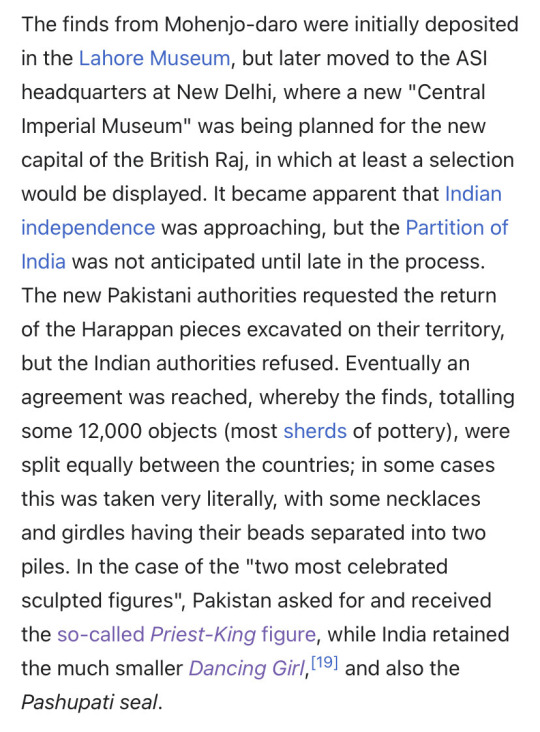
Obsessed over India and Pakistan dividing Mohenjodaro remains like a bunch of siblings dividing Maggi. 10/10 no notes.
69 notes
·
View notes
Note
What are your favourite reads so farr????
(I've been wanting to pick up secret history so baddd but it's so itimidating 😖)
My favourite reads? Oooooh I have MANYYYY
Here's the thing. There are books that I read at a certain age that became my favourite but which if I read now, I'm not sure if I'd still love them the same. But that doesn't discount the younger Vi's obsession with them! So I'll list them ALL
(the ones in purple are the ones younger me has liked but I'm not sure if I would still call my favorites or not. The ones in orange are the ones that I'm 100% sure of being my current favourites)
1) Harry Potter and the Half Blood Prince (ya girl's a basic bish whatchu gonna do)
2) The Curse of Mohenjodaro (when I started reading I had 8 books in total for a while. HP and this one. I'd do the HP marathon, then read this one, then read HP again. Yes it's tattooed on my brain).
3) Pollyanna
4) All the Rick Riordan books till Trials Of Apollo Tower of Nero
5) We Were Liars
6) On Earth we're briefly gorgeous (the first book I annotated. Or tried to at least :p)
7) The Midnight Library (this book came to me at such a right time. I really needed it when I read it)
8) The Invisible Life of Addie LaRue (I read this book over the course of the worst year of my life. I remember nothing except this book from back then and the comfort that it brought me was something that I can't even begin to describe)
9) Babel by R.F. Kuang (This book 🤌🏻😩)
10) Emily Dickinson's 100 Selected Poems (does it count as a book? I know it's a poem collection but imma still count it ig)
11) Bhagwad Geeta
12) Pride and Prejudice (ya girl's a basic bish whatchu gonna do)
13) Odyssey
14) The Picture Of Dorian Gray (BASIL! He's so me. I'd also get killed tryna make a person I used to call my friend but haven't been close to in a while believe they aren't the monster they think they are and that there's still time to repent)
15) The Metamorphosis
16) The Bell Jar ("The silence depressed me. It wasn't the silence of silence. It was my own silence." Sylvia Plath why do you hurt me?)
17) Hamlet (I may have picked the worst book to start Shakespeare but we roll)
18) Classic works of horror of Edgar Allan Poe (this was also a collection so does this also not qualify?)
19) Lessons In Chemistry (Elizabeth Zott save me)
20) Dante's Divine Comedy (I too would write a religion fanfic of me and my favourite author being besties and adventuring. Nah but fr, I'm not even halfway through and I'd die for this book)
21) The Secret History
What an odd number this list ended on.
Also, yes, completely agree, The Secret History is so intimidating?? I kept putting it off for like a year! Like I read the first few paragraphs and was like "need to come back with higher brain power" but in reality the hue of the rest of the book is so different from the first few paragraphs!
@groovycynicalcheesecake thank you so much for this ask! This was my favourite ask ever!!!
23 notes
·
View notes
Note
HEAR ME OUT
Mohenjodaro x Uruk
🫡🫡🫡🫡
We all know this is canon 🗿
ANDDD
Harappa x Ur 🗿💅
38 notes
·
View notes
Text
he's a ten but he lives in sarnath and can't inscribe ashokan brahmi properly
he's a ten but he thinks mālvikāgnimitram is a mediocre love story
he's a ten but he thinks mohenjodaro's dancing girl is meh
he's a ten but he can't tell the difference between gandhara and greek sculptures
he's a ten but he thinks europe developed post-1492 because of its "greatness" and not colonisation
9 notes
·
View notes
Text
indus valley civilization
The Indus Valley Civilization (IVC) is one of the oldest civilizations in the world which started from around 3300 BCE to 1300 BCE and is also known as Harappan civilization. It is widely spread over the vast areas of present-day Pakistan, northwestern India, and northeast Afghanistan. The first sites of this civilization were discovered in the valley of the Indus and its tributaries. Therefore, its name given as Indus valley civilization or Indus civilization.
The official announcement of the discovery of the Indus valley civilization was made by John Marshall, Director General of Archaeological Survey of India in 1924. This discovery uncovered the India’s important past which was roughly contemporary to the time period of Mesopotamian and Egyptian civilization. These 3 are considered as great Bronze Age civilizations. With the static discoveries , different perspectives and views were added by historians in the histography of this civilization led to various debates and discussions among them. The 2 earliest known sites of this civilisation were Mohenjodaro and Harappa now located in Indus valley of present-day Pakistan.
2 notes
·
View notes